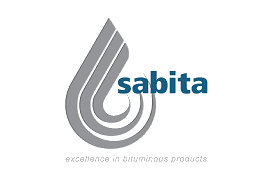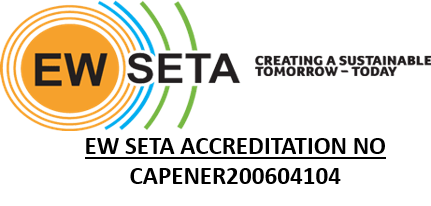Skills Development
Develop Growth in People, and they will create a lifetime of Opportunities.
South African Government
Skills Development Act 97 of 1998
Tax Incentive for Learners
SOUTH AFRICAN REVENUE SERVICE

Skills Development
They say that the smartest people among us are those who adopt a positive attitude toward life-long learning.
In other words, the smartest people are those who realize they will always have a lot to learn, and who spend their entire lives accumulating knowledge to improve their skills development process.
Learning is, then, a life-long process; there is never a point at which you can stop and say that you have learnt everything, or know enough (if you want to be one of the smartest people in the room, or a sought-after professional, that is).
Whether you are a manager at your company, in the human resource management department or just an employee, we all need some skills to improve our career and personal life.

Benifits of Skills Development
Here are reasons why employee training and development is important:
1) Positive employee retention
Hiring and retention can become a major challenge to employers, however, this can be avoided through career development. Training programmes have become so centralised within businesses that it is often used as a competitive advantage when hiring. Offering programmes within employment contracts establish an employee’s sense of value within the company, and fosters loyalty and ultimately staff retention. What’s more is that a business with an engaged workforce will achieve a 59% lower staff turnover rate.
2) Training future leaders
Targeting skills and employees for future leadership will help establish a business for growth and change. Acquiring leadership talent can start from the initial acquisition, or Human Resource professionals can select current employees as managerial candidates. Having established leadership development programmes ensures that an organisation is always considering the future organisational goals by preparing promotable talent.
3) Employee empowerment
Leaders who feel empowered within the workplace will be more effective at influencing employees and gaining their trust. Consequently, those employees will feel a greater sense of autonomy, value, and confidence within their work.
4) Increase workplace engagement
Boredom in the workplace can create feelings of dissatisfaction and negative working habits. Regular development initiatives can prevent workplace idleness. Having frequent training programmes will also establish regular re-evaluation – of employees, skills, and processes. Training and development will also influence company culture by instilling an emphasis on planning.
Training and development can prompt company analysis and planning; it requires employers to review existing talent and evaluate growth and development opportunities internally, rather than via recruitment. Assessing the current skills and abilities within the team will enable managers to strategically plan targeted development programmes that consider any potential skills gap.
- It helps employees develop their current skill set and increase their knowledge
- Improves productivity levels
- Creates new and improved job opportunities
- Keeps employees motivated and increase their contribution levels
- Improves their ability to adapt to new technology and methods
- Reduces employee turnover
Student Help Line:
(021) 839-5163
Policy Environment
The Skills Development Framework is guided by the fact that the South African workforce, in this case all employees within the education training and development sector, need relevant and competitive skills. These are required in order for them to develop as individuals, to add value to the performance of the organisation, and for them to contribute meaningfully to the development of the South African economy. The following policies and legislative frameworks are in place to help ensure that these goals are realised:
- Skills Development Act of 1998
- Employment Equity Act of 1998
- Skills Development Levy Act of 1999
- Labour Relations Act of 1995
- Public Service Act of 1994
- Employment of Educators Act 1998
- National Skills Development Strategy (NSDS 2005-2010)
- National HRD Strategy for South Africa 2001
- Integrated Quality Management System 2003
- National Framework for Teacher Education (Draft)
- FURTHER EDUCATION AND TRAINING ACT
NO. 98 OF 1998
Workplace Skills Plan (WSP)
- Identify and prioritise learners` learning requirements
- Plan and organise learning interventions
- Coordinate learning interventions
- Review and report on learning interventions.
- Analyse current and required skills
- Develop a skills profile and define a skills gap
- Establish skills priorities
- Develop a training and development plan.
- Investigate and analyse the status of the learning culture within the organisation.
- Develop strategies for the promotion of a learning culture within the organisation.
- Implement strategies to promote a learning culture.
Workplace Skills Plan (WSP) Requirements
- Company Levy Number
- Name of Organisation
- Organisation Size
- Physical Address
- Postal Address
- Province
- Geographical Location
- Contact details
- Name of Contact details
- Industrial Sector
- Banking Details
- Contact Person in Finace Department
How to develop a WSP
Below are some simple steps you can follow when developing your WSP. Progression is able to assist employers with their WSP & ATR submissions.
1. Identify existing skills within the organisation.
The first step in developing your WSP is to identify the skills that your workforce already has. Conducting a Skills Audit is the most effective way to do this. The main objective in conducting a skills audit is to identify the skills and knowledge that the organisation currently has, as well as those which it lacks.
Purpose of a Skills Audit
• To identify the skills and knowledge that the organisation:
– requires;
– currently has
• Identify and investigate the current competencies of each employee against pre-defined skill sets required to fulfil a specific role/function.
Benefits of a Skills Audit
• Improved skills and knowledge.
• Decreased training and development costs as development efforts are more focused.
• Improved succession planning for employees’ growth and development.
• Increased productivity as people are better matched to their positions.
2. Identify the skills gap within the organisation.
Once you have identified the skills that are present within the workforce, it becomes much easier to carry out the second step – identifying the skills that are missing and need to be developed. What skills are needed to achieve the strategic objectives of the organisation but are not present in the current workforce? These are the skills that need to be developed. Once again, a Skills Audit is a useful tool in identifying these gaps. Understanding where the gaps lie is an important step to any planning process and will pave the way forward for step 3.
3. Identify the ways in which you are going to develop those skills which are lacking in the workplace.
There are various ways to achieve this, including, but not limited to:
• Learnerships
• Mentorship
• In-house training
• Online training
Other aspects to consider when identifying the best way to develop the skills required include the following:
• What is the cost of the training?
• What level of training needs to be carried out?
• What’s the organisation’s Skills Development budget?
• How many employees need to be trained?
• Where will the training take place?
• Is the training venue accessible (for staff with disabilities)?
The ATR – Annual Training Report.
The ATR accompanies the WSP and is submitted along with the WSP. As stated above, the ATR is intended to show your progress against your last WSP. The report reflects the education, training and development that were implemented in the previous year. Your ATR will assist you in identifying the success/ failure of your previous efforts, thus allowing you to identify areas which you can improve on in order to remain effective and competitive. Records of all education, training and development activities should be available to confirm the information given in the report.
Include the following in your ATR:
• The number of education, training and development activities conducted
• Attendance registers
• Proof of expenditure
• Training provider used
• The number of employees trained
• The occupational areas covered
• The learning methods that were used
• How much was spent on education, training and development activities
• The process used to develop the report
• Name of the Skills Development Facilitator
Putting together your organisation’s WSP and ATR documents can be labour-intensive and daunting. Progression is highly experienced in this regard and can assist employers with their WSP & ATR submissions. For more information about how our team can assist you, email clta@capelab.co.za












